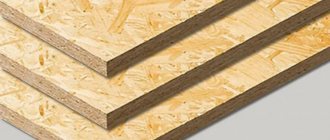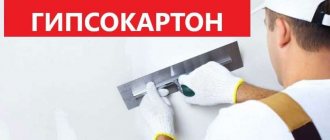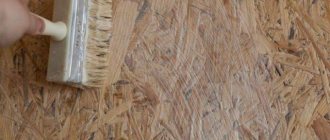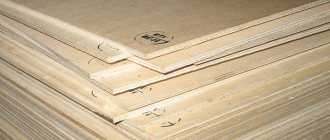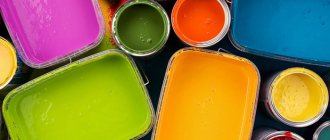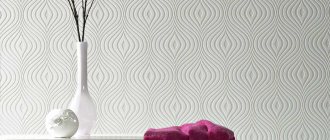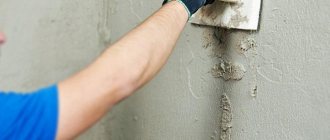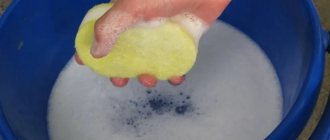Properties of plywood
Plywood sheets are produced with different technical characteristics depending on the type of material.
The compositions differ in moisture resistance, strength, durability and elasticity. In accordance with the developed marking, the type of glue used to impregnate and fix the veneer in the manufacture of finishing products is indicated.
In Russia, the following classification of plywood sheets by size is used:
- 1525x1525;
- 1220x2440;
- 1500x3000, etc.
The thickness of plywood products is 3-30 mm.
Plywood is produced from different types of trees, these are:
- pine;
- birch;
- larch;
- spruce, etc.
Determine whether plywood can be puttyed depending on its characteristics. The types of finishing material are assigned the appropriate markings (FBA, FB, FSF-TV, FC, BV, BS, etc.). Recommended putty for plywood, which is highly resistant to moisture.
These are the following types:
- FSF;
- BS;
- FC;
- FSF-TV;
- FB.
The materials differ in the quality of processing and are divided into non-laminated and laminated types. Sheets with sanding on one side are marked with Ш1. Plates with double-sided grinding are designated Ш2.
It is recommended to putty plywood without sanding, non-laminated to give good adhesion and increased strength.
Purposes of puttying
Not yet fully experienced builders are wondering: is it possible to putty plywood or not? The answer is obvious - of course, it is possible, and even necessary. After all, you need to take into account the water-repellent capabilities of plywood; if it is not primed in time, a number of problems may arise:
- the wood pattern will be visible through the wallpaper;
- all nails, spatulas, as well as other materials for fastening will also be illuminated and create a repulsive effect;
- No matter how ideally the plywood sheets are made, in any case their thickness will differ from each other by fractions of millimeters, so if the surface is not primed, all the flaws will be visible at the joints of the sheets.
IMPORTANT. It is strongly recommended not to use plywood as a building material in areas of high humidity.
The product is primed in order to carry out the process of disinfecting the plywood from all bacteria and fungi, which in the future could completely ruin the repair. Next, the plywood sheet is puttied. At the same time, the applied solution itself becomes a finishing material, especially if it matches the color of the veneer. Also, putty for plywood is necessary in order to maximize the adhesive properties of veneer.
Is it possible to apply putty on a plywood surface?
Experts recommend puttingtying plywood ceilings to solve the following problems:
- increase in service life;
- increasing surface adhesion;
- leveling surfaces from small cracks;
- adjustment of nail heads and fasteners;
- increasing the strength of the base;
- elimination of chips, cracks, seams, joints;
- increasing the moisture resistance characteristics of the material;
- preparing the surface for painting and wallpapering.
The puttying procedure is necessary before plastering the plywood.
Features of finishing wood fiber boards
Plywood and other wood-based boards (oriented strand, wood-shaving, wood-fiber) are widely used in covering surfaces, laying subfloors, and in the manufacture of furniture and other items. These materials are characterized by certain features, and they must be taken into account when preparing for finishing:
Before finishing, such walls must be leveled!
- Uneven thickness. Plywood is glued together from veneer sheets cut from solid wood, and boards are pressed from individual fibers or particles of wood. In any case, it is not possible to achieve perfectly smooth surfaces, so pre-treatment will be required before finishing.
- Fibrous structure. Even after sanding, the surface retains its texture, which can appear under a thin layer of paint.
Sometimes the question arises whether it is necessary and whether it is possible to putty laminated plywood. If further finishing is planned, then at least the joints between the sheets and the fastening points must be sealed. Ideally, laminated surfaces should be sanded to form a rough texture and a thin layer of putty should be applied to the entire area of the cladding. So, both paint and other materials will hold up much better.
- Inhomogeneous coloring (typical of plywood and OSB boards). The layers of wood can be quite contrasting, so they are almost guaranteed to show through under a light pigment.
Without preliminary finishing, the structure and color of the material appears - this is clearly visible in the photo
- Mounting features. In the vast majority of cases, sheets of material are attached to the frame with self-tapping screws. When in contact with moisture, the fastener caps may rust, and as a result, characteristic stains will appear on the wallpaper, decorative plaster or interior paint.
The screw caps must be sealed, otherwise rust will appear.
Sealing slab joints allows you to minimize the consequences of their linear expansion
- Changing linear dimensions. With changes in temperature and humidity in the room, the dimensions of sheets and slabs can change, and quite significantly. If you neglect the putty, the finishing layer will most likely suffer (either cracks or folds will appear).
It is for these reasons that puttying plywood for painting, wallpapering, and even laying thin linoleum is highly desirable. I’ll tell you below what to use for this and how to apply the putty!
Before starting finishing work, the room must be prepared
How to properly apply putty under wallpaper, painting
Before puttingtying plywood, it is necessary to examine the surfaces to be treated, evaluate the quality of the material, select a working mixture, primer, and calculate the required volume of compositions depending on the area of the room.
Puttying plywood is carried out in compliance with the following steps:
- impregnation with drying oil and PVA glue;
- padding;
- applying the material in several layers.
In order for the putty to last a long time and not fall off the surface, it is recommended to take into account the following nuances:
- the plywood should be cleaned of dust in advance;
- sheets are treated with moisture-protective compounds (solutions, impregnations, primers);
- the front surface needs to be sanded to eliminate height differences at the joints;
- after drying, the putty layer is cleaned with fine-grained sandpaper;
- When choosing wallpaper for walls made of plywood sheets, it is recommended to use non-woven or vinyl sheets; paper materials are not suitable for gluing.
What types of plywood mixtures are there?
Before treating surfaces, putty is selected in accordance with the type of finish, subsequent decorative treatment, air humidity level and temperature conditions in the room.
The list of recommended putties includes the following putties:
- Plaster
- used for interior decoration, because unstable to high air humidity. Such mixtures are optimal for processing plywood sheets on walls in bedrooms, living rooms, corridors in apartments and houses. The advantage of the material is its affordable cost.
- Cement
— used for exterior decoration, characterized by increased strength, resistance to mechanical damage, and affordable cost. However, it must be taken into account that sanding walls treated with the composition is more difficult. It is recommended to use cement compounds to putty plywood for painting on facades, hallways, etc.
- Polymer
- They are waterproof, easy to apply, and elastic. The compositions are divided according to their composition into acrylic and latex. Polymer putties have been developed for interior and exterior finishing. The products are sold ready-made in containers of 3-20 kg. The materials are recommended for finishing facades and premises near highways, industrial zones, railways, and metro stations.
Necessary tools and materials for work
Before you putty the ceiling surface, you will need to purchase the following materials and tools:
- a set of narrow and wide spatulas;
- primer mixture;
- rule;
- ladder;
- putty;
- brushes of different sizes;
- drying oil;
- rollers;
- PVA glue;
- containers for stirring solutions, etc.
Impregnation with drying oil and PVA
Before putting plywood under wallpaper, it is necessary to impregnate the surfaces with drying oil or PVA. The procedure is carried out 2-3 days before puttying and improves the performance properties of the bases.
The work is carried out in stages:
- Impregnation is applied to the plywood in several layers.
- Each layer must dry before applying the next. Drying is carried out without a hair dryer, air conditioning, or heating devices.
- After impregnation with the composition, antiseptic solutions are applied to the surface.
- When processing the base, experts recommend thoroughly impregnating the ends of the sheets.
When impregnating surfaces with drying oil, the composition is heated to +60°C. Then the solution is applied to the base with a brush or roller. Layers are applied to the surface until completely absorbed. The ceiling, covered with drying oil, is dried using a hair dryer.
Primer
The use of the material is recommended before puttying and applying decorative plaster to plywood to increase the strength, adhesion properties, and water-repellent characteristics of the base.
The primer has antiseptic qualities, prevents the formation of mold, fungi on plywood sheets and rotting of the base. The primer mixture is selected according to the type of putty.
The work is carried out in stages:
- The ceiling is cleaned of dirt, dust, and grease stains.
- The surface is primed with a brush or roller. For large rooms you can use a spray bottle.
- The primer is applied in 2 layers.
- Before further finishing, the ceiling is thoroughly dried, it will take at least 3-6 hours.
Applying gypsum polymer or cement mixture - which is better and how to apply it correctly
You can putty plywood for painting using standard technology in several layers, the size of each is 2-3 mm.
Surface treatment steps:
- The dry powder is combined with water at room temperature and mixed.
- The work will require a compact and a large spatula.
- Puttying begins with removing the joints; the solution is applied to the seams between the sheets of plywood.
- Irregularities are pre-cleaned, glued with serpyanka and puttied.
- After the joints have dried, they proceed to treating the entire surface.
- The composition is applied sequentially in sections.
- After the first layer has dried, apply the next one; the surface must dry.
- The remaining small grains are cleaned off with fine-grained sandpaper.
Impregnation with drying oil or PVA
Drying oil or PVA glue is used to strengthen the plywood before linoleum is laid on it. First, the plywood is secured and then the sheets are coated with these materials to strengthen and protect them.
IMPORTANT. It is important to remember that in no case should you “help the plywood” dry; you need to wait until the glue itself has completely dried, and then continue working. Otherwise, the material will quickly deteriorate, crack and rot.
After the glue has dried, you need to move on to the next stage of work - treat the surface with an antiseptic solution against fungal formations. This product can be found at any hardware store. Next you need to take acrylic varnish and cover the plywood with it.
If you use drying oil in your work, then you need to adhere to the following instructions:
- Heat to a temperature of 50 degrees Celsius (if it is exceeded, the plywood sheets will deteriorate).
- Apply to plywood using a brush or roller.
- Take a hair dryer and dry the product with it.
- If large drops appear that are no longer absorbed, finish drying with a hair dryer. The end areas need to be dried the longest, since it is in these places that fungal infections subsequently appear if the work is performed incorrectly.
Expert advice on puttying
When applying the solution, the following recommendations of the masters are taken into account:
- Putty mixtures are selected according to the type of work and type of room. Putty for plywood under linoleum must have high strength and wear resistance. The composition for the floor is selected with moisture-resistant characteristics.
- After completion of work, tools are thoroughly cleaned and washed, because The putty composition hardens quickly.
- When applying the mixture to laminated plywood, preliminary cleaning of the base with sandpaper is required to increase adhesion.
Work is performed in protective clothing, a respirator and goggles.
Features of surface puttying
In order for the putty layer to lie smoothly on the surface without the slightest flaws, it is necessary to prime the surface. This is especially true for those plywoods that have a rough surface (for example, OSB boards). Also, many novice builders have a question: do they need to process laminated plywood - definitely yes. Just before doing this, you need to know that you need to remove the laminated layer using sandpaper.
This will make the surface rough, which in turn will improve the adhesive property. The putty should be applied evenly, the thickness should be approximately 3-4 mm. It is especially important to properly work out the places at the joints. To avoid having to sand the plywood with sandpaper after the putty layer has dried, you need to sift the putty mixture through a sieve in advance.
Should I use plywood for wall cladding?
There are several ways to prepare walls for finishing.
You can select:
- plaster - in order to eliminate noticeable irregularities. It is not always suitable, and it is somewhat illogical to level large uneven areas with a layer of plaster; a lot of mortar will be used, and besides, it will take several weeks to dry;
The wallpaper will stick perfectly to the plaster
- plasterboard - in recent years there has been a craze for this material. Plasterboard sheets are attached to the wall very quickly, with their help you can disguise even significant curvature of the wall, and besides, the price of such material is low. And thanks to the white color of the plastered surface, any type of wallpaper can be glued to drywall;
Everything is ready for gluing
Note! Among the disadvantages of drywall, one can only highlight its low strength.
- covering walls with plywood is carried out for the same purpose - to eliminate curvature and increase heat and sound insulation, but at the same time it is necessary to take into account the features of this material. Wallpaper can also be glued to plywood, but thin paper ones will no longer work; the texture of the wood will definitely show through, and the joints between the individual sheets will be visible;
The photo shows an example of using plywood for interior wall cladding
- OSB boards, sheets of dry plaster, etc. can also be used for wall cladding.
Plywood, like any wood, absorbs moisture quite well, after which the veneer may begin to swell and peel off; in this case, only complete replacement of the damaged area will help. Plywood marked FC (considered absolutely safe for humans) is especially sensitive to moisture; its production uses compounds without phenolic compounds, so their resistance to moisture is reduced.
It is best if the walls are decorated with plywood for wallpaper using bakelite plywood. Due to the use of a large amount of glue, such sheets are less susceptible to moisture.
Bakelite plywood is stronger than regular plywood
Plywood can be used as a replacement for plasterboard in cases where the strength of plasterboard boards is not enough, but it is advisable to use it exclusively in dry rooms (it definitely has no place in the bathroom and kitchen). If all the work is done with your own hands, then you need to remember that the weight of a wooden plywood sheet is much greater than that of plasterboard, so a more powerful frame will be required.
The question of how to hang wallpaper on plywood will definitely require protecting the base from deep penetration of moisture. Compared to gluing on plaster, there are a number of differences in terms of preparing the wooden base.
Types and grades of plywood
Most common brands
There are a huge number of brands of plywood, but the following brands are widely available:
- FC (not very resistant to water, adheres to formaldehyde resin);
- FSF (extremely resistant to water, contains phenol-formaldehyde);
- FOF (used in furniture production, covered with laminated plastic and has an attractive appearance);
- FB (resistant to moisture, including salt water due to impregnation with bakelite solution).
Before buying material, it is worth calculating the required amount based on the measurements of the room. In addition, you need to decide what thickness of plywood is ideal for your needs.
Most often, when decorating walls in a wooden house, the following types of plywood are used:
- FSF;
- construction plywood on a glued base;
- laminated plywood (coated with phenol film, which provides high water resistance and allows it to be used for finishing baths, country cottages, private wooden houses);
- FC.
The fewer leaf defects, the higher the grade
Tips and tricks
The purpose of puttying is to level the surface. After all, you don’t really want to put linoleum on untreated sheets. Therefore, in order to avoid the slightest mistakes, it is enough just to know a few rules, without which you cannot do your work:
Plywood, like many other materials, can be puttied. However, it is important to choose the right putty mixture. Putty for plywood must have special qualities, the most important of which is water-repellent properties. This article will discuss the features of plywood processing and choosing the appropriate composition for these purposes.
Types of mixtures
A number of factors are important for the correct choice of putty composition. The requirements for surfaces before wallpapering differ from the requirements before painting, since in the latter case the composition should have a more delicate effect on the surface. In addition, it is necessary to take into account the humidity in the room and temperature changes (for example, cement putty does not tolerate sudden changes in temperature).
Putty compounds are sold in one of two states:
- powdery;
- in finished form (viscous solution).
Most often, dry putties are used to process plywood. Such compositions are more convenient to transport, and their consistency can be adjusted during kneading to the desired degree of viscosity. Dry mixtures are packaged in bags of different capacities.
Solutions are also produced that are completely ready for use. These mixtures are based on various dispersions, as well as polymers in the form of latex or silicone. Polymer materials have a number of significant advantages, which will be discussed in more detail below. The main advantage of ready-made compositions is their complete readiness, since there is no need to spend time and labor on preparing the mixture. The disadvantage of ready-made solutions is their significantly higher cost compared to powders.
Answering the question about how to putty plywood, it should be said that the main differences between different putties are the base material.
For plywood puttying, mixtures based on the following components can be used:
- gypsum;
- polymers;
- cement;
- glue.
Below we will tell you a little more about the different types of putties:
- Gypsum mixtures are characterized by the simplicity of their composition and the absence of shrinkage. However, putties of this type are not flexible enough, as a result of which there is a risk of cracks at the seams due to insufficiently reliable fastening of the plywood sheets. The disadvantages of gypsum putties also include the rather high cost and frequent defects.
- Cement mixtures are characterized by fairly high moisture resistance. A significant disadvantage of cement is its tendency to shrink and lack of elasticity. The negative qualities listed above appear especially clearly in hot weather and sudden temperature changes.
- Polymer-based putty mixtures are most suitable for working with wood. Polymer compositions are characterized by high moisture resistance, and therefore plywood treated with such putties can be used even in damp rooms. Polymers do not shrink, have the highest elasticity, resistance to vibration and mechanical stress. All polymer putties are sold only in finished form (packaged in containers weighing from 3 to 20 kilograms). There are two types of polymer compositions: based on acrylic (silicone) and latex. Putties in this group are also divided according to their scope of application: for interior finishing and for facade treatment. The only significant drawback of using polymer compounds is the high cost of purchasing them.
- Adhesive putty is the result of making it yourself at home. This composition is prepared by mixing PVA glue with crushed wood dust in a certain proportion. Adhesive compositions are characterized by high moisture resistance and elasticity. The advantage of making it yourself is the ability to bring the solution to the desired consistency. In addition, the cost of such a composition is significantly lower compared to factory-produced putty.
How to seal the seams between plywood on the floor
The choice of material for sealing gaps between plywood panels depends on the following factors:
- indoor microclimate (humidity level, temperature);
- gap thickness;
- future finishing.
Preparatory activities
Before you start sealing the seams, they need to be properly prepared. It is advisable to start by sanding the joints of the plywood panels. If the laid plywood is a final finish or a thin material (for example, linoleum) is planned to be installed on top, then all surface errors will be clearly visible.
It is best to remove the difference in the points of contact of the elements using a grinding machine. It will also help get rid of other flaws (knots, irregularities). This work can also be done manually, but it will require a lot of time.
The main goal of sanding a plywood floor is to make the plane level the same; the result can be easily checked with a level Source green-ply.ru
It is additionally important to ensure that the outer parts of the parts are securely fastened. It must certainly be durable. It is unacceptable for the joints to “walk”. Otherwise, even very high-quality putty will not be able to stay inside them.
When plywood is laid on concrete, an appropriate adhesive mixture is used (it cannot be skimped). Installation of plywood panels on a wooden surface is carried out using screws. It is advisable to place the latter closer to future seams.
On the eve of sealing, all cracks must be thoroughly cleaned of debris and dust. To do this, it is best to use a household vacuum cleaner. Then the joints need to be degreased and covered with moisture-resistant primer. If there is a high level of humidity in the room, then the primer mixture should be selected with antifungal additives. The putty is applied only after the primer has completely dried.
Installation of plywood panels on a wooden surface is carried out using screws Source chudopol.ru
Composition and technical characteristics
Today, most putties consist of a latex base and acrylic resin. These polymers are mixed with drying oil or PVA glue to strengthen the consistency. Plaster of Paris, chalk and a piece of laundry soap are also added. Depending on the purpose for which the mixture is used, the proportion of ingredients changes. Technical characteristics of putties depending on the material from which they are made:
- gypsum (inexpensive, does not crack, is elastic, but when it dries, it loses this property and collapses, especially in damp places or places of high vibration: 1st floor, railway, highway);
- acrylic (ideal moisture protection for plywood, improves its adhesion, sells at high prices).
- If you don’t have the opportunity to buy a polymer consistency, you can make it at home: PVA + crushed chalk + sawdust.
Consumption per 1 m2
One square meter accounts for approximately half a kg of dry putty mixture. The solution must be applied evenly with a spatula or brush, having previously primed the surface.
Types of decorative finishes
If we are not talking about laminated plywood, then in most cases additional finishing of the ceiling is necessary, which provides not only a decorative, but also a protective function. Types of such finishing can be different:
- Painting with both regular and textured paint
- Varnishing - its advantage is that varnishing does not require a preliminary primer. Stain can only be used on hardwood plywood.
- Wallpaper.
- Polymer embossed ceiling panels.
